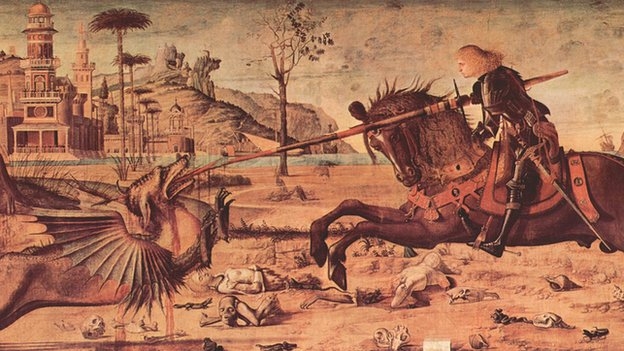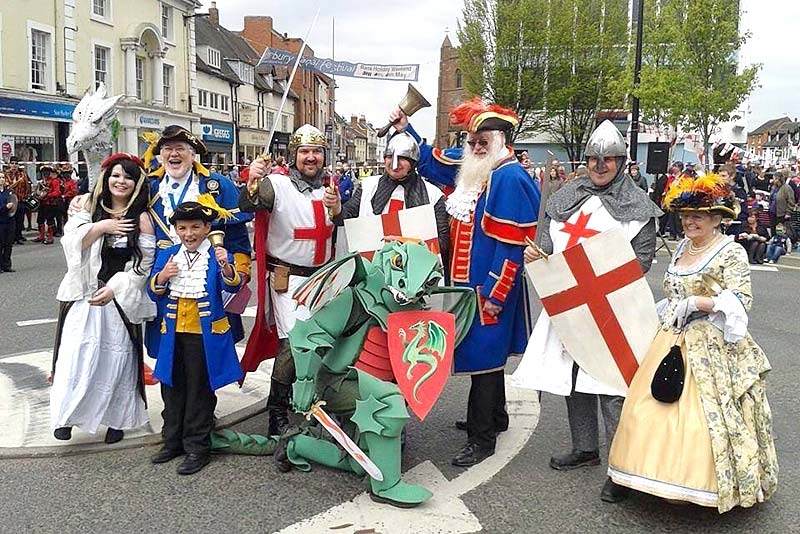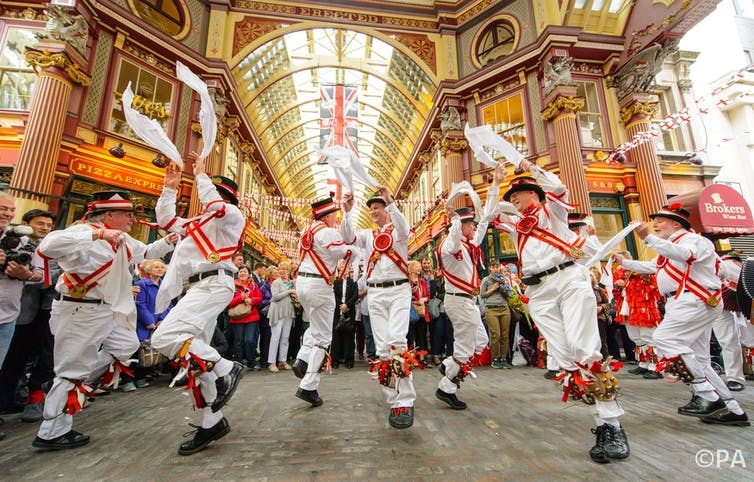St George's Day: History, Meaning, Celebrations and Facts
 |
| Photo: Angloinfo |
St George’s Day takes place on April 23 each year to marks the death of the Patron Saint of England, who is thought to have died in around AD 303 when he was tortured and executed in Palestine, becoming an early Christian martyr.
Most of us will have heard the tale of George and the dragon, but do you know the real history behind the legend? Here is our guide to the patron saint of England!
St George's Day: History
According to legend, St George was a Roman soldier born in what is now modern-day Turkey in around 280AD and died around 303. Very little is known about his early life but it is believed he was born to a wealthy Christian noble family, reported Independent UK.
When he grew up he became a soldier and joined the retinue of Emperor Diocletian.
In 303 Diocletian, as part of a crackdown on the growing influence of the Christian community, ordered that all Christian soldiers in the army should be expelled and all Roman soldiers be forced to make the traditional pagan sacrifice.
St George refused and denounced the edict in front of his fellow soldiers, declaring he was a Christian. Diocletian initially tried to convert him with offers of wealth and land but when he refused he was beheaded on 23 April 303.
 Tamil New Year: History, Date and Time, Meaning and Facts Tamil New Year: History, Date and Time, Meaning and Facts |
What does he have to do with dragons?
The myth of St George slaying a dragon originally appeared in stories told by the medieval Eastern Orthodox Church which were brought back to Europe by the Crusaders in the 10th and 11th centuries.
 |
| Photo: The Rug Seller Blog |
According to one story, a town in Libya had a small lake with a plague-infected dragon living in it. The townspeople were gradually being killed by the dragon and started feeding it two sheep a day to appease it.
Scientists have haggled over the exact details of the birth of St George for hundreds of years but it is generally put at around 280AD
He was an immigrant. George moved all over the world looking for work, immigrating from Syria to modern-day Turkey to look for work. Saint George’s background was about as multicultural as you can get, he was born in Syria to a Greek family
He spread new religious ideas from abroad. For centuries the Roman Empire had worshiped its native pagan gods. George came to fame because he spread his foreign, Middle Eastern, religion to western civilization
When they ran out of sheep the king devised a lottery system to feed it local children. One day his own daughter was chosen and as she was being led out to the lake St George happened to ride past.
He reportedly offered to slay the dragon if the people converted to Christianity. They all did, and the king later built a church where the dragon died.
If he was from Turkey how did he become the patron saint of England?
King Edward III made St George the country’s official saint-just after he came to the throne in 1327. According to historian Ian Mortimer, a patron saint did not have to be from the country they were born in – they just needed to embody the characteristics the kingdom wanted to project to the outside world.
After all, as well as England, St George is also the patron saint of Portugal, Venice, Beirut, Malta, Ethiopia, Georgia, the Palestinian terrorists, Serbia and Lithuania.
Edward III wanted to rebuild the strength of the English monarchy after the disastrous reign of his father – St George was part of his strategy to make England one of the most powerful and warlike nations in Europe.
 Holy Thursday: Time&Date, History, Significance, Celebrations and Everything to Know Holy Thursday: Time&Date, History, Significance, Celebrations and Everything to Know |
How is St George's Day celebrated?
St George's Day used to be a national holiday in England. It is now an observance that is celebrated with parades, dancing, and other activities, Time and Date cites.
 |
| Photo: Evening Standard |
Flags with the image of St George's cross are flown on some buildings, especially pubs, and a few people wear a red rose on their lapel.
 |
| Photo: All About Newport |
Church services on the Sunday closest to April 23 often include the hymn 'Jerusalem', written by the poet William Blake. The words describe a supposed visit to Glastonbury, England, by Jesus Christ during his youth.
 |
| Photo: The Conversation |
April 23 is not a public holiday. Schools, stores, post offices, businesses and other organizations are open as usual. Public transport services run to their usual timetables.
10 interesting facts about Saint George:
As the nation celebrates St George’s Day, here are 10 things you might not know about England’s patron saint.
1. St George’s Day takes place on 23 April, which is traditionally accepted as being the date of his death in AD 303.
2. St George was beheaded for resigning his military post and protesting against his pagan leader, the Emperor Diocletian (245-313 AD), who led Rome’s persecution of Christians.
3. The Emperor’s wife was so inspired by St George’s bravery and loyalty to his religion, that she too became a Christian and was subsequently executed for her faith.
4. Before the cult of St George was brought back from the Crusades, the top choice for England’s patron saint was Edmund the Martyr, one of the Whuffings, East Anglia’s ruling family. Edmund is also the patron saint of pandemics, torture victims, and wolves.
5. St George is the Patron Saint of Scouting and on the Sunday nearest to 23 April scouts and guides throughout England parade through the streets.
6. His emblem, a red cross on a white background was adopted by Richard The Lionheart and brought to England in the 12th century, when the king’s soldiers would wear it on their tunics to avoid confusion in battle.
7. Aside from England, other countries that celebrate St George’s Day include Canada, Croatia, Portugal, Cyprus, Greece, Georgia, Serbia, Bulgaria, Romania, Bosnia and Herzegovina, and the Republic of Macedonia.
8. Though celebrations are somewhat muted in modern times, Englishmen can still be seen to mark St George’s Day with quintessentially British traditions, such as Morris Dancing (as in the video above), eating fish and chips or watching a Punch and Judy puppet show.
9. The most famous legend of St George is of him slaying a dragon, with the dragon commonly used to represent the Devil in the Middle Ages. The slaying of the dragon by St George was first credited to him in the 12th century, long after his death and it is therefore likely that the many stories connected with St George’s name are fictitious.
10. The date of 23 April was also the date of the death of the English playwright William Shakespeare. UNESCO marked this historic date by declaring it the International Day of the Book and it is also traditionally when Shakespeare’s birthday is celebrated, reported Britain Magazine.
 National Beer Day In USA: Why It Is Celebrated, List of All Beer Drinking National Beer Day In USA: Why It Is Celebrated, List of All Beer Drinking Get your wallet, grab a glass and call your friends to gather around the local pubs, or stay at home with a six pack! National ... |
 Pradosh Vrat Day: History, Significance and Celebration Pradosh Vrat Day: History, Significance and Celebration Pradosh Vrat is a popular Hindu vrat that is dedicated to Lord Shiva and Goddess Parvati, can be observed by all irrespective of the age ... |
 Easter Day: History, Significance, Celebrations and Facts Easter Day: History, Significance, Celebrations and Facts On April 12, Christians will be celebrating Easter, the day on which the resurrection of Jesus is said to have taken place. This article of ... |


























